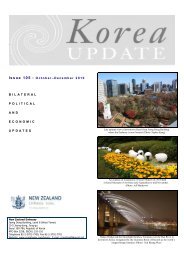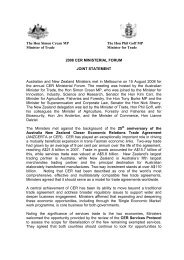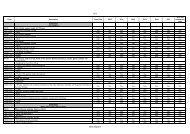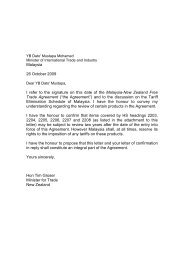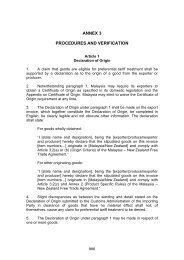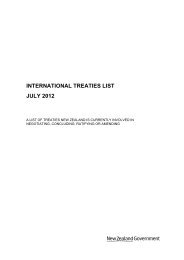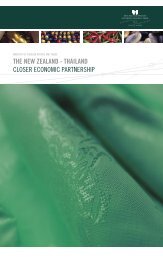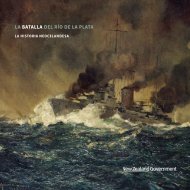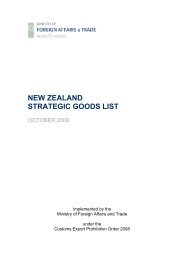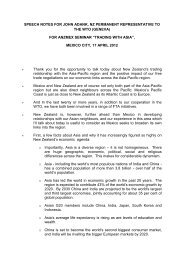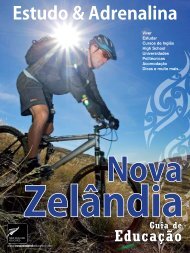New Zealand's National Universal Periodic Review (UPR) Report ...
New Zealand's National Universal Periodic Review (UPR) Report ...
New Zealand's National Universal Periodic Review (UPR) Report ...
- No tags were found...
Create successful ePaper yourself
Turn your PDF publications into a flip-book with our unique Google optimized e-Paper software.
Meeting of civil society organisations to receive feedback on <strong>New</strong> Zealand’s draftnational report under the <strong>Universal</strong> <strong>Periodic</strong> <strong>Review</strong> of the UN Human RightsCouncilChristchurch, 11 March 2009A public consultation meeting was held in the afternoon of Wednesday 11 March 2009 toallow Christchurch-based stakeholders to discuss, and give feedback on <strong>New</strong> Zealand’sdraft national report under the <strong>Universal</strong> <strong>Periodic</strong> <strong>Review</strong> (<strong>UPR</strong>) of the UN Human RightsCouncil. The meeting was chaired by the Ministry of Foreign Affairs and Trade (MFAT).The Ministry of Justice (MOJ) also attended.A total of 11 participants attended the meeting: the <strong>New</strong> Zealand Human RightsCommission (NZHRC) (Joanna Collinge, Bruce Coleman, Karolin Potter, Tina Marsh)joined the following civil society organisations in attendance: Mental Health Foundation(Ciaran Fox), Community Law Canterbury (Marissa Johnpillai), Network Waitangi Otautahi(Katerine Peet), Amnesty International (Inez Grim and Natalie Baird), Disabled PersonsAssemble (Anna Mitchell) and the Christchurch Ethnic Council (Jim Fraser).Richard Kay (MFAT), outlined the purpose of the meeting: to inform on the process usedfor preparing <strong>New</strong> Zealand’s draft national report, and to seek direct feedback and viewsfrom participants on the draft to inform Ministers before submission of the final report.Alana Messent (MFAT) gave a brief presentation on what the <strong>UPR</strong> is, and the keytimelines for <strong>New</strong> Zealand’s review. Richard Kay then outlined the process for drafting thereport: the key themes, resources drawn upon and challenges faced. Participants werealso encouraged to present their comments in the form of written submissions.Introduction• Katherine Peet: commented that the Treaty of Waitangi was not a treaty between the“Government and the indigenous” as described in the draft report. The report shouldhighlight that it was a treaty between two sovereign nations, drawing from the researchand work of Matthew Palmer, and the Prime Minister’s statements at Waitangirecognising that things needed to be remedied. The report should also make clear thatthe Waitangi Tribunal has no binding powers, and therefore should not refer to this asa partnership with Maori.Section One: Methodology and Consultation Process• Richard Kay explained that this section would be updated to reflect the latest round ofconsultations.Section Two: Background of Country2.1 Constitutional, Political and Legal Structure• Katherine Peet highlighted a contradiction in the section in that it refers to bothParliamentary supremacy and the separation of powers. She also asked that it bemade clear that Maori having a direct say in Parliament (para 6) is not the result of anyconstitutional arrangement/link to the Treaty, but is the result of the MMP system ofproportional representation.2.2 Relationships with the Cook Islands, Niue and Tokelau24



